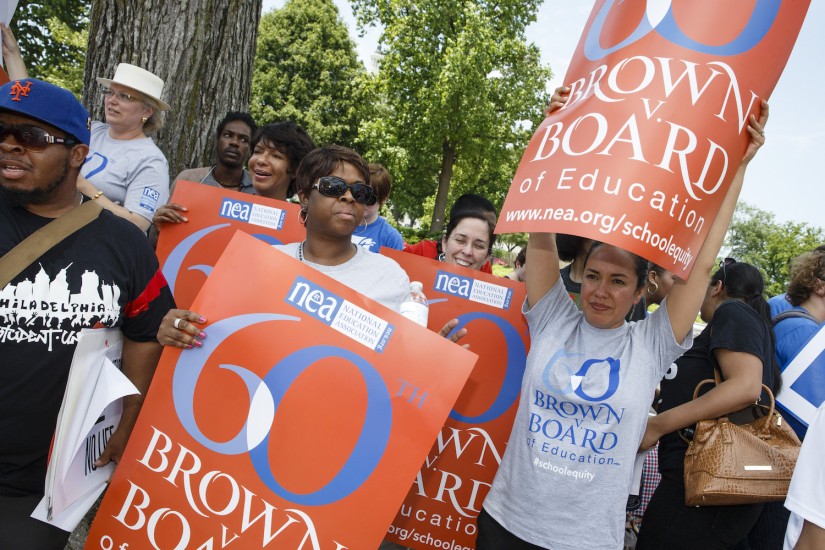Brown was not a total washout. In border states like Maryland, where segregation was less rooted in the state’s culture, 90 percent of school districts complied with Brown by 1964. But in the Deep South, Brown barely laid a glove on Jim Crow. Ten years after the justices declared school segregation unconstitutional, Justice Hugo Black wrote for a frustrated Court that “there has been entirely too much deliberation and not enough speed in enforcing” Brown.
What finally broke the back of segregation wasn’t the Supreme Court. And while the mass civil rights movement rallied countless Americans to the cause, it couldn’t have achieved its goals alone. It took Congress to breathe real life into Brown. Though the Civil Rights Act of 1964 is best remembered today for its provisions targeting private discrimination, it also contained two provisions enabling the federal government to desegregate public schools.
In the decade following Brown, few Southern lawyers were willing to bring desegregation cases—even if they could find a plaintiff willing to become their client. The Civil Rights Act solved this problem by empowering the Justice Department to file suits in the name of the US government against schools that refused to integrate. Southern districts that were able to dodge lawsuits brought by the NAACP suddenly had all the resources of the government to contend with.
In addition, the act enabled federal officials to withhold funding from segregated schools. This provision allowed the federal government to adapt more quickly to Southern attempts to thwart integration than the courts could ever have accomplished.
By the end of 1966, the administration had terminated federal funds for thirty-two school districts. By the time President Johnson left office, the government had begun proceedings against 634 school districts and terminated funding for more than 120 of them. Alabama Governor George Wallace, surveying the wreckage administration officials were making of public school segregation, declared that if he were president, he would “bring all these briefcase-toting bureaucrats in the Department of Health, Education and Welfare to Washington and throw their briefcases in the Potomac River.”
Though the Nixon administration drastically rolled back enforcement of the Civil Rights Act, it was forced by a court order to resume it. And just two years after the act took effect, the percentage of Southern black children attending integrated schools had increased more than fivefold. Within five years, nearly a third of Southern black children attended integrated schools. By 1973, as many as 90 percent did.
